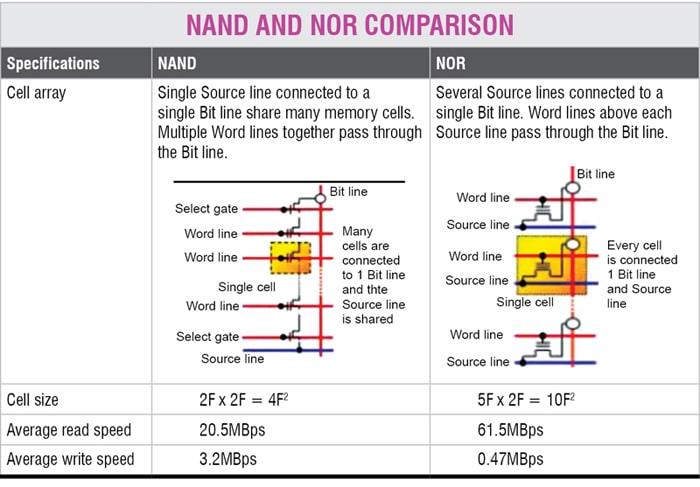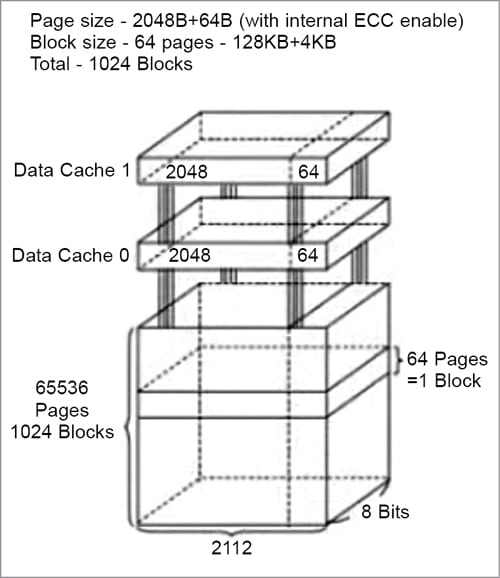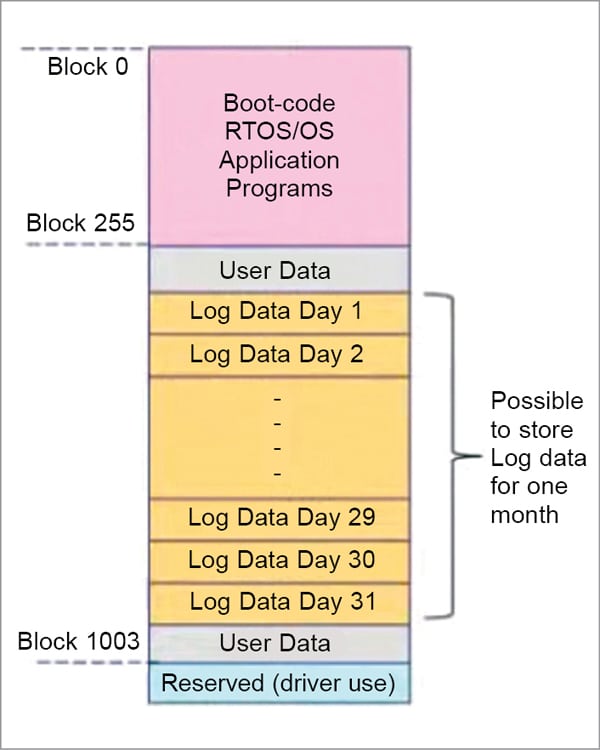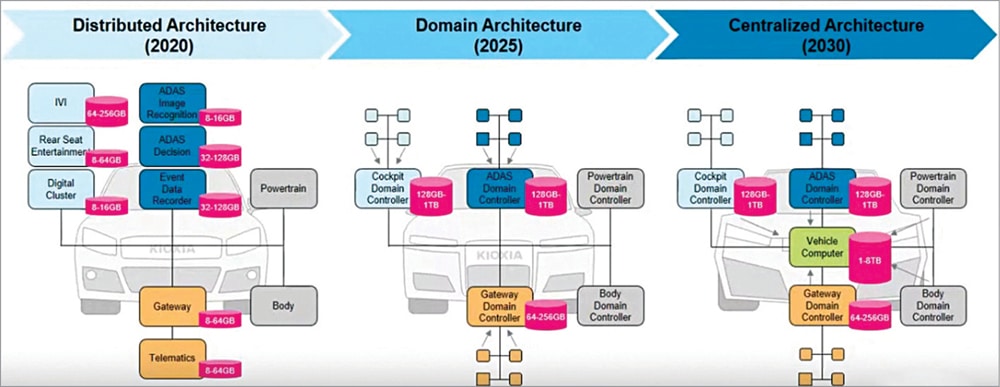While NOR has a fast read speed that is beneficial for quick software loading in embedded devices, it cannot meet the storage power of NAND. So, when should you make the shift? Read to know more.
In the current market scenario, almost all the embedded systems are becoming smarter, resulting in the development of innovative smart TVs, smartwatches, and many other IoT devices every one to five years. Part of this increased smartness is due to fast communication protocols like 4G LTE, 5G, Wi-Fi, and GPON that have connected everything—no matter how far they are.
While all this brings added intelligence and richer user interface (UI) that makes our tasks a tad less difficult, consequently, it requires higher processing capacity, for which flash memory plays an essential role. Commonly used flash memory types in modern digital systems include NOR and NAND. Traditionally, NOR types are used in digital devices owing to their fast read capability with respect to a large firmware.

But NOR devices are quite expensive and consume a lot of power, which decreases in standby mode. Moreover, for applications requiring high write speed, NOR is not adequate. This is where NAND with its faster write speeds and higher memory capacity can make a difference.
So, before we dive deep into the technicalities of NAND, let us see the Table below for a quick comparison between NAND and NOR types.
For the NAND flash, a single memory cell is at least 2.5 times smaller than the NOR flash, making NAND less expensive. To understand more about the internal structure of NAND and how successful transition can be made from NOR, let us look at the following.
NAND flash memory structure
In the diagram shown in Fig. 1 for 1-gigabit (1Gb) NAND flash memory, there are two data caches of 1 and 0. Below them, all are memory cells or arrays. For 1Gb serial NAND, we have a page size of 2048 bytes plus 64 bytes for spare. The structure is enabled with internal error code correction (ECC) that can be disabled as well.

When 64 pages are brought together, it becomes a single block, that is, 64 pages=1 block. It comprises 128-kilobyte (kB) memory size plus 4kB for spare. Total 1024 blocks make up 1-gigabit (Gb), which equals 128 (or 125) megabytes (MB), as eight bits equal one byte.

Migration from NOR to NAND
To shift from NOR flash to NAND flash memory, some partitions of 1Gb serial NAND memory can be done. Traditionally, the NOR flash could be 128kB or even 1MB. So, with 128MB, nearly 256 blocks can be put with an additional 32MB. It now becomes a boot-code firmware, RTOS, or some application software.
Maybe, one-quarter of that is good enough for some embedded system in your device. Partition it so that the rest can be used for user data or the system log data. Some areas also have to be reserved for driver use.

The NAND block may contain some bad blocks, meaning, some blocks could be damaged. So, the reserve area can replace the bad blocks.
When you migrate from NOR to NAND flash, a software driver is required, which could include a serial peripheral interface (SPI). As mentioned earlier, NAND is suitable for applications with intensive write/erase requirements or storage, such as smartphones, digital cameras, and USB flash drives.
Future automotive requirements
The increased enhancement in embedded systems is rapidly transforming the automotive sector. The next-generation vehicles, particularly autonomous vehicles, rely on high computing power for managing electrical/electronic (E/E) architecture that includes complex embedded control systems and related hardware/software.
 Over here, both NAND and NOR—along with EEPROM, DRAM, and FRAM—play a significant role in automotive E/E systems. In 2020, the distributed architecture, which included ADAS image recognition, ADAS detection, and event data recorder was introduced. On the infotainment side, there was in-vehicle infotainment (IVI), rear seat entertainment, and digital cluster. For the gateway, there was Gateway and Telematics. Today, up to 256GB for infotainment and 16GB or 32GB for safety and gateway systems can be achieved.
Over here, both NAND and NOR—along with EEPROM, DRAM, and FRAM—play a significant role in automotive E/E systems. In 2020, the distributed architecture, which included ADAS image recognition, ADAS detection, and event data recorder was introduced. On the infotainment side, there was in-vehicle infotainment (IVI), rear seat entertainment, and digital cluster. For the gateway, there was Gateway and Telematics. Today, up to 256GB for infotainment and 16GB or 32GB for safety and gateway systems can be achieved.
With enhanced centralised storage and processing capabilities, the year 2025 will see distributed architecture turn into domain architecture with all the parts/blocks getting integrated. So, the IVI and rear-seat entertainment system, along with other infotainment systems, will get under the cockpit domain controller, requiring up to 1TB.
The safety system will become the ADAS domain controller that will include all the recognition and detection, even the data recorder. It will also be up to 1TB. The gateway domain controller, including telematics, may need more than 256GB. Powertrain and body domain controllers will not require much storage.
By 2030, all the above are expected to move to a centralised architecture, which will be controlled by vehicle’s computer, a high-speed processor requiring 1TB to 8TB. It will also control the cockpit domain, safety domain, and gateway domain. Together, they will require 10TB or more. Obviously, it would be a drastic increase in the storage requirements for the vehicle of the future.
Outcome
After going through the above details, a question comes to mind. Should all NOR devices be changed to NAND devices? Well, it all boils down to the application. NOR can efficiently handle boot speeds as it has better data reading capability. But where NOR fails at adequate data storage, NAND can step in as it has better write speed.
The article is based on a talk by Ong Chuen Wee, Engineering Manager at Memory Marketing Department, KIOXIA Singapore. It has been transcribed and curated by Vinay Prabhakar Minj, an IoT and audio electronics enthusiast.






